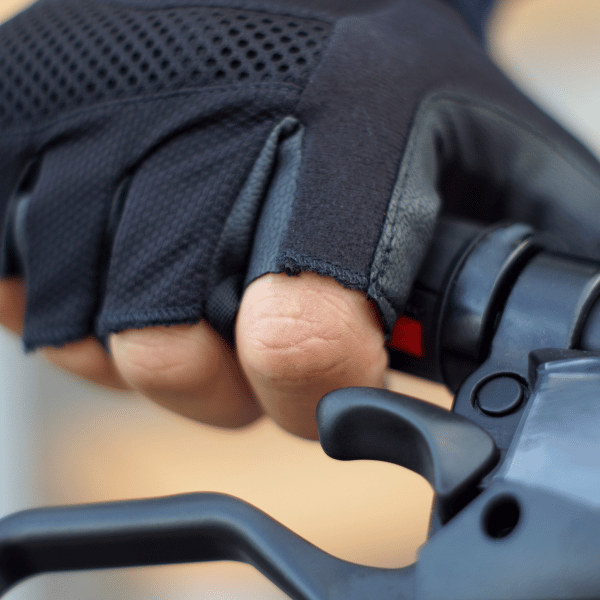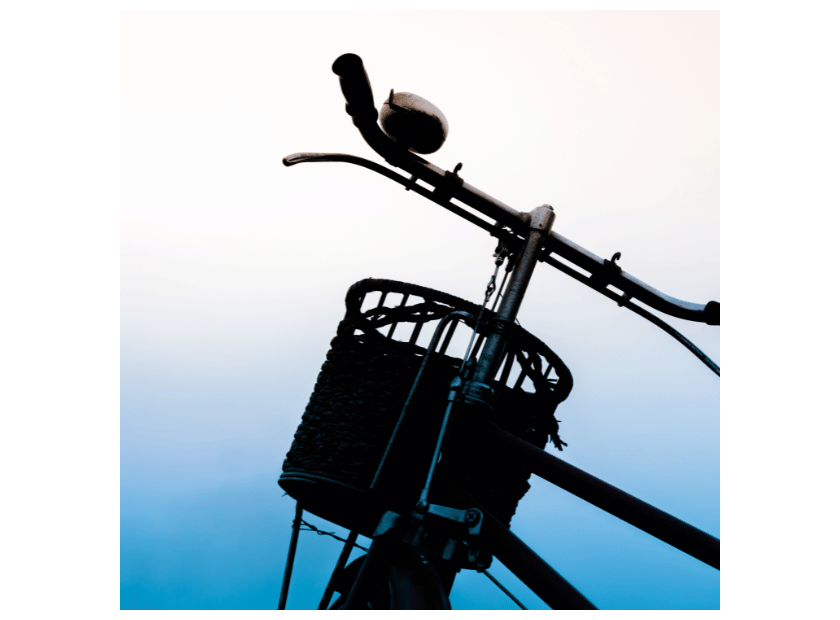Choosing the right length of your bicycle stem: A complete guide.
Selecting the proper length for your bike’s stem is a crucial decision that affects both its comfort and performance. Stem acts as a point of contact connecting the fork to handlebars, and this makes it central for any changes in response, handling and rider positioning. Understanding different stem lengths to optimize cycling experience.
This guide is intended to give an in-depth understanding on how one can establish their ideal bike stem length. It will also cover some technicalities involved in taking measurements of stems, importance of rider biomechanics while choosing a stem size and how these lengths relate to steering stability in bicycles. Through following such systematic approaches by riders, they can decide intelligently and thus enhance their efficiency, control and riding pleasure.

The Importance Of Knowing The Right Length Of Your Stem
Having the right stem length is important when it comes to maximizing comfort, ride ability, and performance on your bike. Despite being small, this part plays a big role in determining how you feel about biking as a whole.
What Function Does The Stem Play In Your Bike Fit?
Stem connects handlebars with the fork which means that it becomes more pivotal when steering or affecting your position while riding. This would be where an ideal length of stem helps by distributing weight evenly between front and rear wheels ensuring effective transfer of power; comfortable seating positions as well as precise control over technical terrains. Key parameters that affect choice of stems are arm & torso length of the rider plus his/her riding style, type of bicycle being used.
How Does Stem Length Impact Your Riding Experience?
Your bike’s handling as well as comfort level during rides are quite dependent on its respective stem size. A long stern could have greater stability at high speeds besides making one slouch flatter thereby improving aerodynamics whereas a short one leads to faster steer angles hence desirable for winding paths plus trails that involve many corners. On top of that, your judgment should also take into account the size of the bike; width across handle bars and personal tastes in riding positions.
What Are The Consequences Of Having An Incorrect Stem Length?
This is a problem that can be caused by an incorrect length of stem resulting in poor bicycle control, discomfort or even injuries. A stem which is excessively long may force a rider to stretch out thereby probably leading to back strains as well as shoulder disorders whereas one which is too short makes the cycle feel twitchy hence lack of stability. This will help riders experience maximum comfort while avoiding muscle stiffness/fatigue.
Factors to Consider When Selecting the Right Stem Length
Choosing the right length of your bike’s stem is very important because it helps enhance biking performance and comfort. Factors such as bike type, riding style and rider’s body geometry must be considered so as to achieve a customized fit geared towards better control and efficiency.

How Does Bike Type Influence Your Stem Length Choice?
Recommendations for different bikes are made depending on their intended activities which determine what sizes their stems should have. For example, longer stems are often better for road cycles since they promote aerodynamics over distance and effective power transfer while shorter ones would allow mountain bikers maneuver more easily through narrow trails. In addition, hybrid bicycles might go for median lengths when choosing their stem sizes thus offering a blend between traffic & command. It is vital that you choose the right size of the stem based on its purposeful use with respect to other parts within this whole set up thus achieving maximum performance.
What Impact Does Your Riding Style Have On Stem Length Selection?
The ideal stem length significantly changes with a rider’s style of riding. However, riders who are aggressive enough to allow high speed and efficiency on flat terrain may prefer a longer stem allowing them to be more aerodynamic. On the other hand, those prioritizing maneuverability in technical trails or urban environments might want to choose a short stem so that it can provide quick and responsive handling. Often agonizing over their bodies’ positions, endurance riders will have no choice but settling for a not too long frame part reducing pressure exerted on their backs and shoulders during exceptionally long rides.
If your stem is not yet in the right size, how do you know this is suitable?
For better comfort and efficiency, one should put into consideration body geometry factors like arm length and torso length before choosing an appropriate stem length. Shorter torso would need smaller stems for comfortable control to avoid strain while riding, whereas longer arms will make it necessary to use bigger stems which will help in maintaining stable control over your bike. Other measurements including arm-lengths versus shoulder-widths as well as flexibility come up when tailoring the right helmet-fit that best suits particular users’ physical attributes hence giving them an amazing experience.
How can you adjust the length of your bicycle’s handlebar post for better performance?
It is important to adjust the bike’s stem length so that you may be able to cycle comfortably; efficiently and faster generally. In this part of our discussion we shall look at different techniques through which one can determine their ideal handle bar lengths as well as ways of adjusting these bars.

What is used to determine what Stem Length is correct?
In order to identify the most appropriate stem size, various biomechanical evaluations are combined with actual ride testing procedures where certain measures such as “handlebar reach test” focus on ensuring that there is natural reach without stretching too much or cramping while another measure titled “90-degree elbow rule” suggests that elbows must be slightly bent when the rider’s hands are on the handlebars. When you try riding with different stem lengths, it is possible to feel how different sizes contribute to better handling and comfort.
Which adjustments will make your stem length just right?
Stem length adjustment is a careful process that incorporates considerations of parameters like stem angle, clamp diameter, and length. Before replacing your new stems, check if they are compatible with steering tube diameters of your bike’s handle bars. While shorter or longer stems can be tried for more comfort or performance respectively, always ensure that there is a position where one can attain a comfortable reach and power transfer without losing control. Afterwards, remove old stems by loosening stem bolts, placing the new ones and then re-tighten bolts in their correct positions ensuring that they are well secured. Remember; during actual rides trial and error with various stem lengths will give you first-hand feedback on achieving excellent fit.
The Choice of the Best Stem Length for Various Kinds Of Cycling(H2)
A brief description of the title (as an introduction, a short and concise one is sufficient, 280-330 characters) is intended to lead to the following sub-heading and related instructions (sub-heading H3).
What size of road cycling should I go for?
(We would like you to answer this as an industry expert in easy language while listing down each relevant parameter if any so as to justify your answer).
How does stem length vary between mountain biking and road cycling?
Please answer the above questions in an easy-to-understand tone if you are an industry expert and list relevant parameters in detail one by one where applicable to justify your answer.
What things should be taken into consideration by a gravel cyclist when choosing a stem length?
Please answer the above questions in an easy-to-understand tone if you are an industry expert and list relevant parameters in detail one by one where applicable to justify your answer.
Frequently Asked Questions:
Q: What is a bike stem, why is it important to choose the right length?
A: The bike stem is that part of the bicycle that connects handlebars with the fork’s steerer tube. It determines how comfortable or not you will feel on your bike when it comes to riding position and other aspects so it is very important to pick up the correct size of it for you.
Q: How do I know the right stem length for my road bike?
A: There are many factors which determine what would be an ideal stem length for any given road bike including riding style, body proportions, flexibility, etc. You could have your road bike professionally fitted or speak with a bike fitter who could advise on the best fit for your particular situation.
Q: What are some advantages of using longer stems on bikes?
A: With a longer stem, riders can adopt more aerodynamic positions when riding at speed along roads while also acquiring improved stability at high speeds and better control as they descend hills. On top of this though, such a posture may create aggression and stretching out.
Q: When should I think about using a shorter stem on my bike?
A: For instance when controlling technical terrain or seeking more ride comfort in upright position like mountain biking or gravelling bikes
Q: How does changing stem length affect my bikes handling qualities?
A:The ability of your bicycle to respond well as well as its stability depends upon its stern’s extension. Consequently longer sterns add stability at high speeds but decrease maneuverability while shorter sterns provide enhanced maneuvers although they may not be firm enough for higher velocities.
Q: Can I change the stem length on my bike myself?
A: If you have the right tools and knowledge, you can go ahead to do that. Nevertheless, it is always good to consult a professional bike mechanic in order to achieve outstanding results and prevent any potential complications.
Q: What factors should I consider when choosing a stem length for my bike?
A: The riding style is one of the key factors that you should consider before buying your first stem. Secondly, the type of bike on which you are installing the component matters as well. Whether want to use the handle bars while seated or standing, size of one’s body and how flexible he/she can become during rides also influences this decision too. Using a fit guide with a professional fitter will help ensure that you choose the correct size of it.


